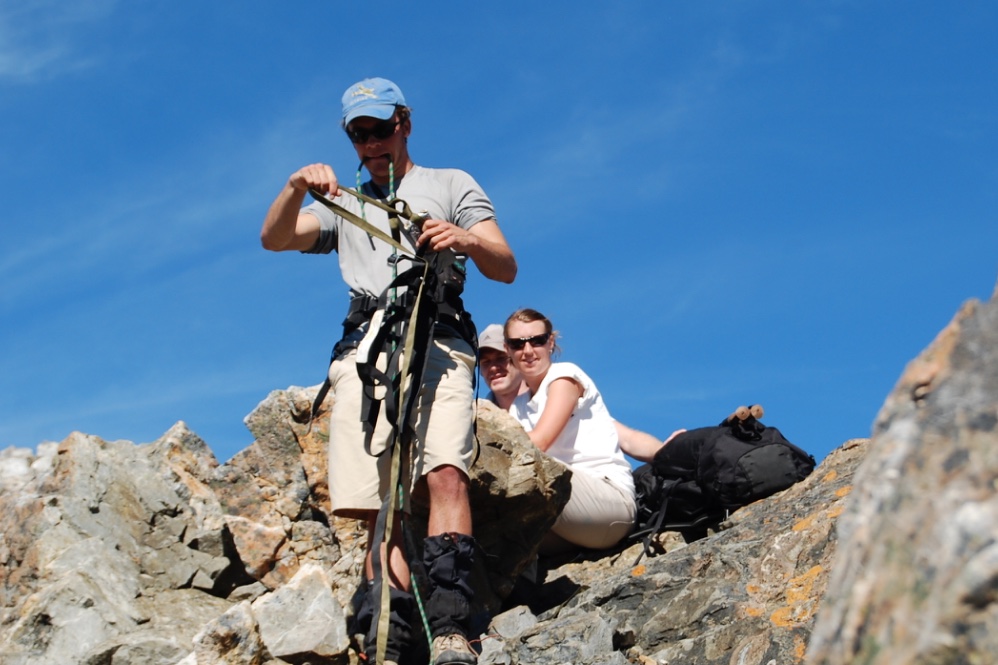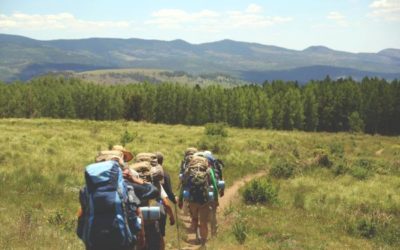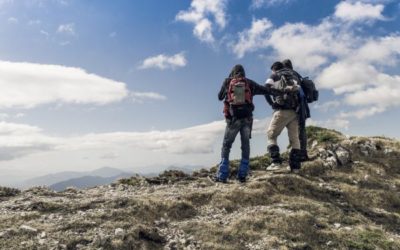Nothing is pleasant that is not spiced with variety. – Francis Bacon
Jesus made the effort to vary his teaching techniques, and for good reason. He motivated his listeners to participate with him in the learning process. He moved audiences to be active participants. He taught for impact, not just as a ritualistic exercise. Some examples of how he varied his teaching was through presentations, discussions, lecture-style, and question-answer sessions. I don’t know about you but sometimes I get stuck in a rut with a similar teaching style and then I wonder why I start feeling dry or my students feel less motivated.
VARIATION IS MORE POWERFUL THAN WE REALIZE
Varying my teaching styles is often the remedy. Teaching at students is much less effective than creatively figuring out ways to get them to participate and wrestle with the topic. Facilitating outdoor experiences provide a feast of options for the type of experiential learning that invites participation. If you are in the wilderness, you actually don’t even need to try that hard because the outdoor environment offers such variety and unfamiliarity that it creates a “need to know” situation where people’s desire to learn is piqued.
RELATED: A Purpose for Wilderness Experiences – Familiarity leads to complacency: | Genesis 12:1-3
CONNECTING THE OLD & THE NEW CREATES INTEREST
Jesus was the master of this style of teaching. He often used the element of surprise, told countless stories, demonstrated truth through object lessons, and quoted ancient and contemporary sources. I have found that in teaching if you can connect the old and the new, this creates interest. Jesus also told memorable maxims. A maxim is simply an earthy statement that points out an obvious truth. For example, “actions speak louder than words” is a maxim that we often use in our every day language. Jesus was constantly scattering pithy sayings to make people think. Jesus also offered challenges, rebuked wrong thinking, offered commentary on Scripture, told riddles, argued, and at times remained totally silent which really made people squirm.
The lesson we learn from all of the variety and effort Jesus demonstrated to involve people in the learning process is that people tend to learn better when they do something with what they learn. Robert Zuck in his fantastic book, Teaching as Jesus Taught, provides a list of some of the ways Jesus initiated participation in order to promote learning. I’ve italicized the action verbs to highlight the elements of participation and involvement in Jesus’ teaching approach.[i] [Note: Just hover your cursor over the verses below and you can see the biblical text for each principle]:
WAYS JESUS USED VARIATION TO GET PEOPLE TO PHYSICALLY PARTICIPATE
- The disciples climbed in a boat while he taught (Mark 3:9).
- The disciples baptized converts (John 4:2).
- He sent the disciples to a nearby Samaritan town (not a town they were familiar with) to buy food (John 4:8).
- He told a demon-possessed man to go tell his family of his healing (Mark 5:19).
- He sent twelve groups in pairs to exorcise demons, heal the sick, preach, and teach (Matthew 10:1-4; Mark 6:7-13; Luke 9:1-6) with detailed instructions (see Matthew 10:5-40).
- He had the disciples report their ministry (Mark 6:30; Luke 9:10) and then took them away for a retreat (Mark 6:31-32; Luke 9:10).
- He directed the disciples to seat five thousand people down in groups (Matthew 14:19-20).
- He took Peter, James, and John with him to climb the Mount of Transfiguration (Matthew 17:1).
- He told Peter to catch a fish and take a coin out of its mouth (Matthew 17:27).
- He sent messengers into a Samaritan village to prepare accommodations (Luke 9:52).
- He commissioned seventy-two in groups of twos to go heal sick and preach (Luke 10:1-17).
- He sent two disciples to Bethpage to get a colt for him to ride into Jerusalem demonstrating his Kingship (Matthew 21:1-3).
- He sent his disciples to prepare the Passover meal (Matthew 26:17-19).
- He commanded his disciples to make disciples of all nations (Matthew 28:18-20).
- He commanded Peter to feed his sheep (John 21:15-17).
As I wrote in, Christian Outdoor Leadership: Theology, Theory, and Practice, this is just a small sampling of the ways Jesus quickly moved people from listening to doing. Even the best of teachers know that it’s when you teach others something that you really begin to understand its inner workings. Jesus is the Creator, founder, initiator, and originator of experiential learning. And he wanted his disciples to go do the same. After washing their feet to teach them the paramount importance of getting their hands dirty as servants of the Kingdom, he said with timeless lucidity: “I have set you an example that you should do as I have done for you.” (John 13:15)
The Apostle John wrote down many examples of Jesus teaching this way, but even what he wrote down was just the tip of the iceberg. Hear the Apostle John’s enthusiastic exclamation point at the end of his account, which highlights that Jesus was constantly a doer of the Word: “Jesus did many other things as well. If every one of them were written down, I suppose that even the whole world would not have room for the books that would be written.” (John 21:25)
TO DO
- Look ahead to the next time you are planning to teach a group and pick out one of these examples that heightens participation and variation and give it a try. Then email me and let me know how your teaching improved!
[i] Zuck, Roy, Teaching as Jesus Taught (Grand Rapids: Baker Books, 1995), 174-175. All fifteen of these examples are referenced by Zuck.




